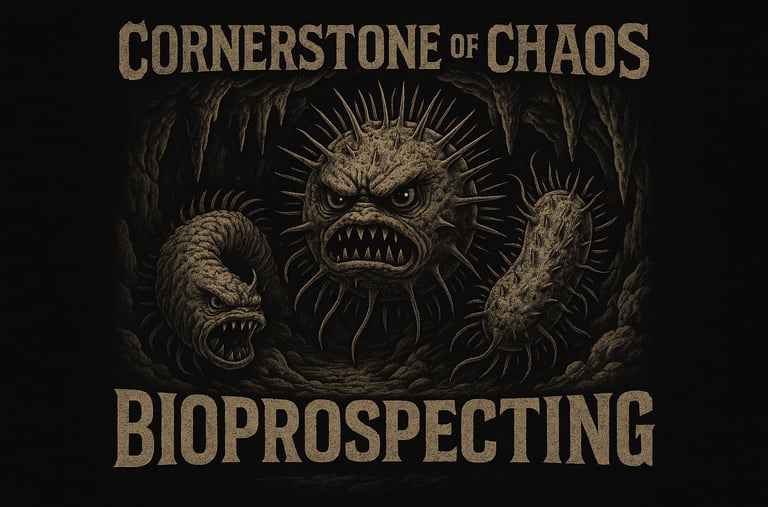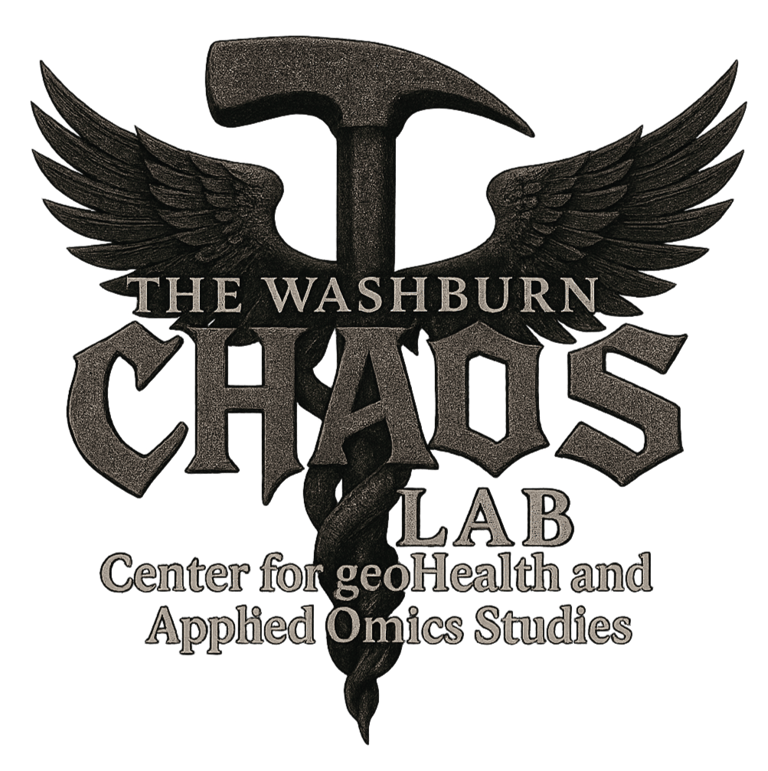Bioprospecting: CHAOS Lab's Research into Nature's Biochemical Arsenal
The CHAOS Lab has launched a feral bioprospecting initiative, targeting Kentucky’s wildest geologic zones—caves, radon soils, and post-mining terrain—to hunt extremophiles with real-world potential. We’re not collecting microbes for fun—we’re chasing biochemical underdogs that could transform medicine, remediation, and environmental health. The hunt is on, and we’re bringing the chaos.
BIOPROSPECTINGRESEARCH FEATUREBADASS MICROBESCORNERSTONE OF CHAOS
5/28/20252 min read
There’s something inherently poetic—feral, even—about life flourishing in places that seem completely inhospitable.
Places carved by tectonic violence. Soils laced with radon. Limestone voids that haven’t seen sunlight in a hundred million years. These aren’t tourist destinations. These are pressure cookers, survival tests, and natural crucibles. And yet… microbes are there. Thriving. Adapting. Enduring.
At the Washburn CHAOS Lab, we don’t just admire these survivors—we go looking for them.
This is our newest initiative: a feral bioprospecting campaign rooted in Kentucky’s most extreme and geologically unruly terrains. The forgotten zones. The stressed ecosystems. The kinds of places that look empty until you start listening on the microbial level—and realize the party never stopped.
We’re not chasing biodiversity just to fill a spreadsheet.
We’re hunting biochemical underdogs.
Life forms that evolved in darkness, molded by pressure, and fine-tuned by millennia of environmental instability. Extremophiles that might just carry molecular blueprints for the next wave of medical, environmental, or industrial breakthroughs.
Think about it:
Immune modulators scraped from biofilms that cling to cave walls like living armor.
Antibiotic analogues born in radon-rich soils where no typical microbe dares replicate.
Enzymes that don't just survive geochemical stress—they weaponize it.
These organisms have been in the lab of Earth for eons, field-testing molecules under heat, pressure, and radiation. Now it's time we bring those lessons into ours.
So far, our first field runs have taken us into karst cave systems and radon-associated soils identified through Kentucky Geological Survey’s mapping efforts. These aren’t just cool places—they’re microbial proving grounds. Environments shaped by collapse, groundwater flow, mineral shifts, and natural radiation exposure. The kind of places where microbes either adapt fast—or vanish.
Every sample we pull adds to our growing database.
We’re using omics tools—metagenomics, transcriptomics, metabolomics—combined with geospatial mapping, to build a full-scale microbial diversity map tied to Kentucky’s complex geology. This means tracking life signatures not just by species, but by stressor. By pressure type. By mineral environment.
And this is just the beginning.
Next up?
We’re moving into:
Subsurface groundwater systems with high geochemical gradients.
Post-mining landscapes and reclamation zones—areas that were torn up, stitched together, and left to regrow.
Inactive mines with histories of high metal content, extreme dryness, or thermal instability.
These sites aren’t sanitized or safe. They’re gritty. Sometimes dangerous. But they hold secrets.
And if there’s a microbe out there chewing on heavy metals, breathing oxidants, or fixing carbon in the pitch-black—we want to meet it. Sequence it. Study how it works. And maybe… turn its tricks into tools.
This is long-haul science.
The kind that takes time, bruises, and a whole lot of field gear. But that’s where the breakthroughs live—in the sweat, in the silence, in the spaces where no one thought to look.
So no, this isn’t sterile science.
It’s chaos with purpose.
Bioprospecting like a storm front.
Because if a microbe has figured out how to survive in the wreckage—
it might just teach us how to heal it.
Stay tuned.
The hunt is on.
And we’re bringing the chaos.


Hunting microbes. Forging medicine. Raising hell underground.
